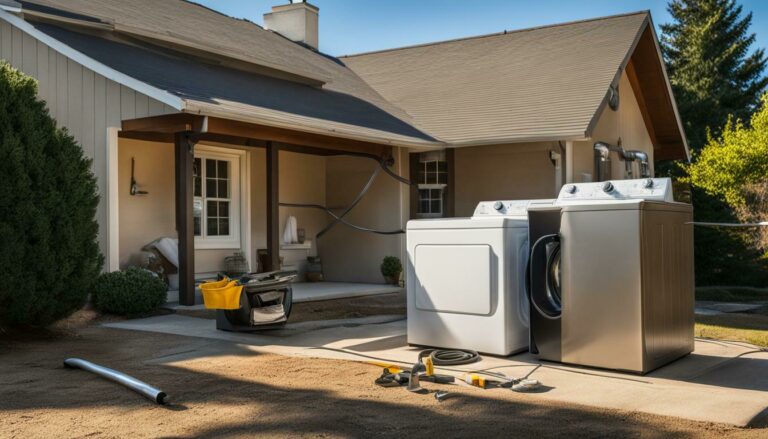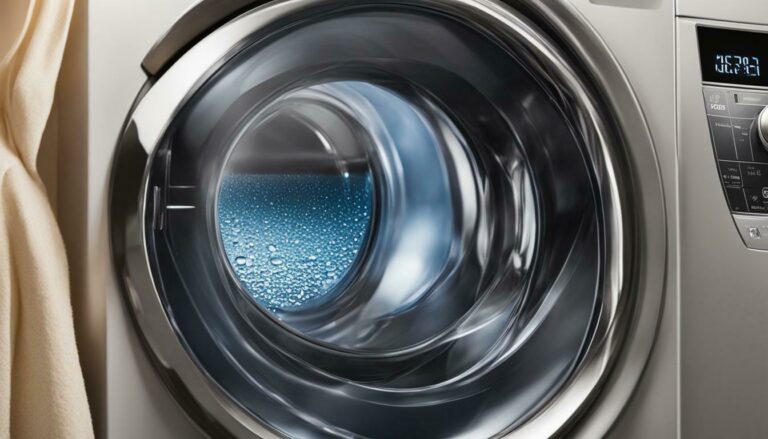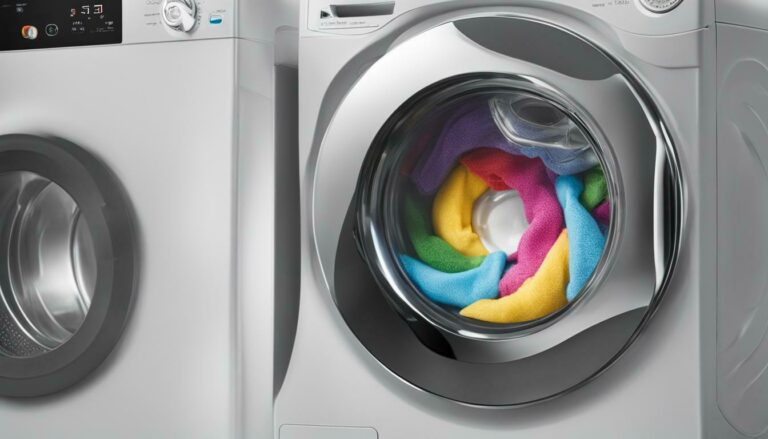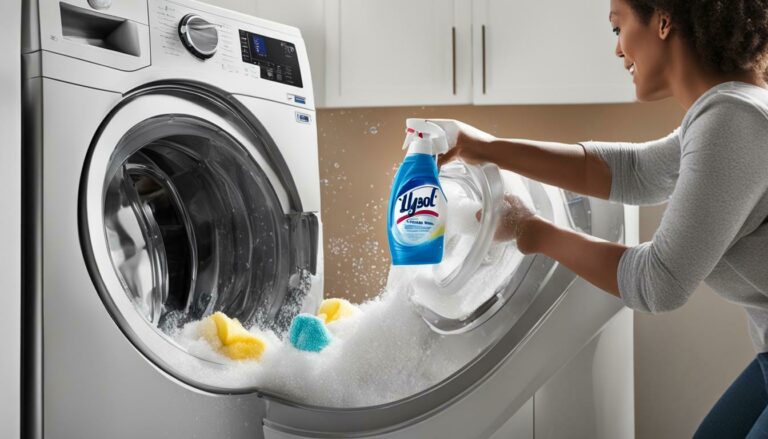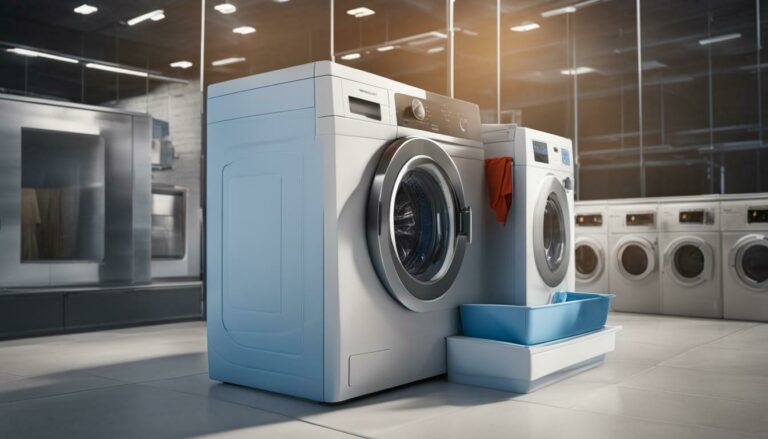Mastering How to Use Cap Fixer Samsung Washing Machine – A Guide
When it comes to installing a Samsung washing machine, there are several important factors to consider in order to ensure optimal performance and prevent any issues. Mastering how to use the cap fixer on your washing machine is one of them. In this guide, we will cover everything you need to know about cap fixer for Samsung washing machine, including its importance, installation, and usage.
Key Takeaways:
- Proper installation of a Samsung washing machine requires a firm, level surface, adequate space for ventilation, wiring, water supply hoses, and the drain hose.
- Remove shipping bolts from the back of the washing machine and connect the water supply hoses to avoid leaks.
- Choose an HE (High Efficiency) detergent and add it to the correct compartment to ensure optimal cleaning.
Preparing the Space and Laundry Room for Installation
Before you begin installing your washing machine, it is essential to prepare the space where it will be located. This will ensure that the installation goes smoothly and that your machine operates efficiently.
Start by measuring the area where you plan to install the appliance. Make sure that there is enough space to accommodate the washing machine without blocking any doors or windows. It is also important to have a firm and level surface for the machine. Avoid carpeted or slippery floors, as these can cause the machine to move or vibrate during use.
The laundry room should have adequate space for ventilation, wiring, water supply hoses, and the drain hose. It is recommended to keep a minimum of 1 inch between the washing machine and dryer, as well as between the appliances and the walls. If the washing machine is not installed on the ground floor, a drip pan or drain pan may be required to prevent leaks.
If you plan to stack your washing machine with a dryer, make sure to use matching models and follow the instructions provided with the stacking kit.
When installing a front-load washing machine, remove the shipping bolts from the back and save them for future use if needed. Before connecting the water supply hoses, inspect them for any signs of wear and replace them if necessary. Make sure to tighten the fittings properly to prevent leaks. The drain hose should be installed either over the edge of a wash basin or in a standpipe, laundry tub, or utility sink. Follow the instructions provided with the washing machine to ensure proper installation.
It is important to use the right detergent for your washing machine. HE (High Efficiency) detergent is recommended, and it should be added in the appropriate compartment depending on the type of washing machine you have. Avoid using regular or organic detergents as they can cause damage.
Proper sorting, pretreating, and loading of laundry will ensure effective cleaning. Sort clothes into piles for whites, colors, and bedding. Pre-treat stained clothing before washing. Make sure not to overload the washing machine and adjust the detergent amount based on the size of each load.
Overall, preparing the space and laundry room for installation involves measuring the space, ensuring proper ventilation and access to water supply and drainage, and using the correct detergent and loading techniques for effective cleaning.
Removing Shipping Bolts and Connecting Water Supply Hoses
Before using your front load washing machine, it is crucial to remove the shipping bolts from the back. Removing shipping bolts and connecting water supply hoses are important steps in the installation process of a washing machine. It is recommended to ensure the laundry room has the necessary space and ventilation for the appliance. The ambient temperature should be above freezing and the surface should be firm and level to prevent vibration issues. A drip pan is required if the washing machine is not installed on the ground floor.
To remove the shipping bolts, refer to the user manual for the specific location on the back of the machine. Use the supplied wrench to loosen and remove all bolts, then fill the holes with the provided plastic covers. It is important to keep the shipping bolts and spacers for future use if the machine needs to be moved.
When connecting the water supply hoses, it is crucial to use brand-new hoses to prevent leaks. Connect the ends of the hoses to the hot and cold faucets, ensuring that each connector has a rubber gasket to prevent leaks. Tighten the fittings by hand and then with a wrench, making sure not to overtighten. Open the faucets for a few seconds to remove any foreign substances from the hoses, then connect the hoses to the water supply intake connections at the back of the washer. Again, tighten the fittings securely and check for leaks.
Lastly, the drain hose should be installed properly to prevent issues with draining and odors. There are two options for positioning the drain hose: over the edge of a wash basin or in a standpipe, laundry tub, or utility sink. Follow the specific instructions for each option in order to ensure proper drainage.
It is important to refer to the user manual for the specific instructions related to the washing machine model being installed. This is especially relevant when replacing cap on a Samsung washing machine. Following these guidelines will help ensure a successful installation and prevent any potential issues with the machine. In case of common issues with Samsung washing machine, such as troubleshooting tips, it is essential to use the right product and washing machine spare parts, like dishwasher parts, water accessories, and locking nut. Also, customer service and promotions of related products and replacement parts can be helpful.
Installing and Positioning the Drain Hose
Do not forget to properly install the drain hose to prevent drain errors, leaks, and odor issues. The drain hose is an important part of the washing machine setup and can be installed in two ways.
Over the Edge of a Wash Basin
| Installation Steps |
|---|
| 1. Place the drain hose spout over the edge of the wash basin. |
| 2. Ensure the height is between 24 inches and 35 inches from the floor. |
| 3. Secure the drain hose’s spout with a plastic hose guide and a hook on the wall. |
| 4. Ensure the hose is secured to avoid kinking or tangling and obstructing the drain. |
In a Standpipe, Laundry Tub, or Utility Sink
| Installation Steps |
|---|
| 1. Insert the drain hose into the standpipe, laundry tub, or utility sink. |
| 2. Ensure the height of the standpipe or tub is no shorter than 39 inches and no higher than 96 inches from the floor. |
| 3. Secure the hose to the tub or standpipe using zip ties to avoid kinking. |
| 4. Do not make the connection between the drain hose and the standpipe airtight to prevent drainage issues. |
| 5. If the drain hose is installed below 39 inches, water may drain into the washer during cycles, resulting in an error code. |
Properly installing and positioning the drain hose is critical to avoid issues such as no drain errors, water leaks, and odor problems in the washing machine. The maximum height of the drain hose should not exceed 96 inches, as it reduces the draining capability and may cause odors in the washer.
Leveling the Washing Machine and Using the Correct Detergent
Properly leveling the washing machine is crucial for its optimal performance. When installing a washing machine, it is important to prepare the laundry room or closet by measuring the space and ensuring a firm, level surface. Adequate ventilation and space for the washer’s door to open freely should also be considered. Additionally, it is recommended to use a drip pan if the machine is not on the ground floor and to keep a minimum of 1 inch between the washing machine and dryer.
When connecting the water supply hoses, it is crucial to use brand-new hoses and to tighten the fittings snugly to prevent leaks. The hot and cold water supply hoses should be correctly connected to the appropriate intake connections on the back of the washer. Installation of the drain hose is also important to prevent no drain errors, water leaks, and odor issues. It can be installed over the edge of a wash basin or in a standpipe or utility sink, following specific height requirements.
Leveling the washing machine is essential for proper performance. For front load washers, the machine should not rock in any direction when gently rocked with hands.
When it comes to choosing the correct detergent, it is important to use HE (High Efficiency) detergent specifically designed for washing machines. Regular, organic, natural, and HE detergents containing natural ingredients should not be used as they can cause damage. The type of detergent, whether liquid or powder, can be chosen based on personal preference, but it should be an HE detergent. Following the guidelines provided by the detergent manufacturer, using the appropriate amount of detergent and not exceeding the MAX line in the detergent drawer is crucial to avoid staining or damaging clothes or the washer. Washing machine models have different compartments for adding detergent, depending on the type of machine, such as Flex Wash, Top Load, or Front Load.
Sorting clothing and household items before washing and using pre-treatments or pre-soaking for stained items can help improve cleaning effectiveness. It is also essential to use the proper load size and adjust the detergent amount according to the size of each load.
By following these guidelines for leveling the washing machine and using the correct detergent, users can ensure efficient and effective washing machine performance.
Conclusion
By following these guidelines, you can master the installation and usage of the cap fixer Samsung washing machine. Installing a washing machine requires careful preparation and attention to detail. Before installation, make sure the laundry room has a level surface and ample space for ventilation, wiring, and water supply hoses. It is crucial to use new hoses when connecting the water supply and ensure a secure connection to prevent leaks. The drain hose should be installed correctly to avoid issues with drainage and odors. Additionally, be sure to use HE detergent and follow the manufacturer’s guidelines for the recommended amount. Different types of washing machines have specific compartments for adding detergent. Sorting, pretreating, and loading clothes properly will also contribute to efficient and effective cleaning. Proper maintenance and troubleshooting can help avoid common issues with Samsung washing machines. Overall, following these guidelines will help ensure a successful washing machine installation and optimal performance.
FAQ
Q: Can I stack my Samsung washing machine and dryer?
A: Yes, you can stack your Samsung washing machine and dryer, but only if you have a front load washer and matching models. Refer to the user manuals for specific instructions and recommended stacking kits.
Q: Can I reuse old water supply hoses?
A: It is essential to use brand-new water supply hoses to prevent leaks. Reusing old hoses can lead to issues, so always use new ones.
Q: How do I remove shipping bolts from my Samsung washing machine?
A: Consult your user manual for the exact location of the shipping bolts on your model. Loosen and remove them using the provided wrench, and fill the holes with the plastic covers provided.
Q: What type of detergent should I use in my Samsung washing machine?
A: Samsung recommends using HE (High Efficiency) detergent. Regular detergents and detergents with natural ingredients can damage the machine.
Q: How do I properly level my Samsung washing machine?
A: Gently rock the washing machine and adjust the leveling feet until the machine is stable and does not rock. Refer to the user manual for specific instructions for your model.
Q: How should I sort my clothes before loading them into the washing machine?
A: Sort your clothes into piles for whites, colors, and bedding. If any items are stained, you can pretreat them before washing.

